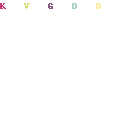Kettlebell Snatch versus Swing (*study)
 Both the kettlebell snatch and kettlebell swing are regularly programed by coaches for their athletes, and often in the same session or routine. But are they really producing different results? Sort of. The snatch produces a greater vertical displacement for the athlete’s center of mass, while the swing produces a greater horizontal displacement – oddly, the mechanical output for both of these exercises is similar. So while the one handed snatch might “feel” like it requires more effort than the swing, at the end of the movement, they’re very close.
Both the kettlebell snatch and kettlebell swing are regularly programed by coaches for their athletes, and often in the same session or routine. But are they really producing different results? Sort of. The snatch produces a greater vertical displacement for the athlete’s center of mass, while the swing produces a greater horizontal displacement – oddly, the mechanical output for both of these exercises is similar. So while the one handed snatch might “feel” like it requires more effort than the swing, at the end of the movement, they’re very close.
Magnitude and Relative Distribution of Kettlebell Snatch Force-Time Characteristics
Journal of Strength & Conditioning Research: November 2014 – Volume 28 – Issue 11 – p 3063–3072
Lake, Jason P.1; Hetzler, Brandon S.2; Lauder, Mike A.1
Abstract: The aim of this study was to compare mechanical output from kettlebell snatch and 2-handed kettlebell swing exercise. Twenty-two men performed 3 sets of 8 kettlebell snatch and 2-handed swing exercise with a 24-kg kettlebell on a force platform. Vertical and horizontal net impulse, mean force, displacement, the magnitude, and rate of work performed displacing the kettlebell-and-lifter center of mass (CM), phase durations and impulse ratio (horizontal to resultant) were calculated from force data. The results of repeated-measures analysis of variance showed that: (a) vertical CM displacement was significantly larger during kettlebell snatch exercise (22 ± 4 vs. 18 ± 5 cm, p = 0.001), and vertical CM displacement was significantly larger than horizontal CM displacement, regardless of exercise (20 ± 3 vs. 7 ± 1 cm, p < 0.0001); (b) the magnitude (253 ± 73 vs. 3 ± 1 J, p < 0.0001) and rate of work (714 ± 288 vs. 11 ± 4 W, p < 0.0001) performed to vertically displace the CM was larger than the horizontal equivalent in both exercises, and the magnitude (5 ± 2 vs. 1 ± 1 J, p < 0.0001) and rate of work (18 ± 7 vs. 4 ± 3 W, p < 0.0001) performed to horizontally displace the CM during 2-handed swing exercise was significantly larger than the kettlebell snatch equivalent; (c) this was underpinned by the magnitude of horizontal impulse (29 ± 7 vs. 18 ± 7 N·s, p < 0.0001) and the impulse ratio (23 vs. 14%, p < 0.0001). These findings reveal that, apart from the greater emphasis, 2-handed swing exercise places on horizontal mechanical output, the mechanical output of the 2 exercises is similar. Research shows that 2-handed swing exercise improves maximum and explosive strength. These results suggest that strength and conditioning coaches should consider using kettlebell snatch and 2-handed swing exercise interchangeably for the ballistic component of athlete strength and conditioning programs.


